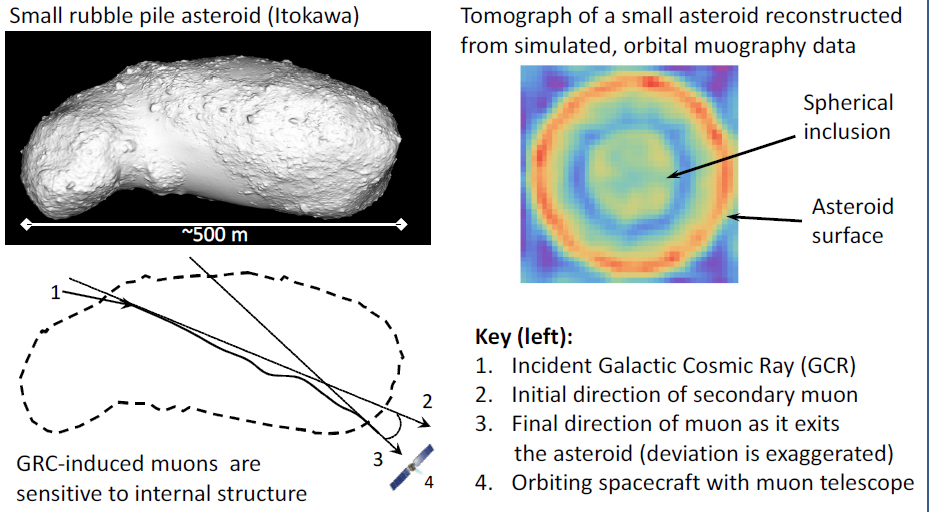Thomas Prettyman
Planetary Science Institute
› 2014 Symposium Presentation (PDF)
› Phase I Final Report (PDF)
Description
Established remote sensing methods provide coarse, indirect information about the interior structure of small bodies. This information is generally inferred from surface structures and overall mass density. Imagine being able to directly examine the interior of a comet or asteroid. Is the asteroid a composite of different materials or is it uniform? On a comet, how do the vents extend into the nucleus? Are there distinct interior reservoirs of volatiles? Determining the macro-scale of asteroid porosity would be fundamental to characterizing their rubble pile nature and formation and necessary for the development of planetary defense strategies. Knowledge of the interior structure and heterogeneity of comets would provide the first detailed physical constraints on jetting mechanisms, regolith formation and episodic mantle loss, while revealing interior evolutionary processes ongoing in the outer solar system. We propose to develop new types of spacecraft instrumentation, data analysis, and imaging methods that enable mapping the interior of small solar system bodies (SSBs, e.g. asteroids, comet cores and near Earth objects) to unprecedented depth and detail. Our proposed method makes use of galactic cosmic ray (GCR) secondary particle shower products, such as pions and muons. Muons, in particular, can penetrate rock to depths on the order of a kilometer and enable the deep interior of SSBs to be sampled, potentially with meter-scale spatial resolution. The secondary muons produced by GCR collisions with Earth’s atmosphere provide a convenient flux of long range particles that have already found application in volcanology, archeology, and national security, for which radiographic and tomographic methods are employed. Successful Earth surface applications demonstrate that the proposed concept is viable and that the likelihood of success is high; however, the existing muon radiography and tomography methods depend on the production of muons in Earth’s thick overlying atmosphere so that implementation of transmission radiography is straight forward. Interpretation of muon fluxes measured by a spacecraft orbiting an SSB requires separating the production of these particles in the near surface from space background contributions. In this proposal, we will use modeling to determine the magnitude of these signatures and their sensitivity to the internal and near surface structure of solar system bodies. We will also evaluate concepts for imaging systems and missions that would acquire this information.

































